If you’ve ever wondered how was the social system structured in Genoa, you’re not alone. The Genoese Republic, known for its naval prowess, merchant wealth, and complex political dynamics, had one of the most intriguing social structures of any medieval state. Understanding Genoa’s layered social hierarchy reveals how families, clans, and merchant alliances built a thriving, yet often turbulent society along the Ligurian coast.
Delving into the social organization of Genoa means uncovering a world where identity, ambition, and duty were shaped by centuries of history and commercial ambition. Unlike the tightly feudal systems common elsewhere in medieval Europe, Genoa’s society was an evolving mosaic—marked by the powerful interplay of birthright, economic opportunity, and public participation. The city’s unique location as a Mediterranean crossroads catalyzed an environment where nobility and merchant elites worked alongside upwardly mobile artisans, shipbuilders, and civic leaders, all competing for influence and security.
Genoa’s population, though diverse in status and role, was bound by intricate networks: extended families called alberghi, guilds that protected skilled trades, and political alliances that could quickly shift from collaboration to rivalry. These social frameworks didn’t just define who had access to power—they determined everything from the justice one could expect to the neighborhoods where one lived and the legacy that could be built for future generations.
Tracing the development of Genoa’s class system offers more than just a study in historical trivia; it provides insight into how flexible social structures can fuel innovation, resilience, and at times, deep-seated strife. Encountering Genoa’s past, you see a city that thrived on adaptation—melding aristocratic privilege with new wealth, blending local traditions with global opportunity, and making space for both competition and collaboration.
Whether you’re researching for an academic essay, building out a case study, or simply fascinated by the ways societies organize themselves, learning how was the social system structured in Genoa helps illuminate some of the most critical forces driving both historic and contemporary civilizations.
From Port to Power: The Background of Genoese Society
Before we answer the key question—how was the social system structured in Genoa—we need to understand the unique foundation of Genoese society. Unlike many medieval societies that were agriculturally based and feudal in structure, Genoa was a maritime republic. This meant power wasn’t just held by nobles with land, but also by those who could navigate trade routes, fund expeditions, and raise fleets.
The city emerged as a significant power in the Mediterranean around the 11th century, competing with rivals such as Venice, Pisa, and later, the Ottoman Empire. Its strategic location made Genoa not just a city, but a hub of commerce, diplomacy, and cultural exchange.
This economic foundation deeply influenced Genoa’s social organization. Wealth—especially from overseas trade, banking, and public finance—mattered as much as birthright. However, that does not mean the system was egalitarian. Like other medieval cities, Genoa had a clear, if flexible, class structure.
The Genoese Elite: Nobility, Merchant Princes, and the Power Clans
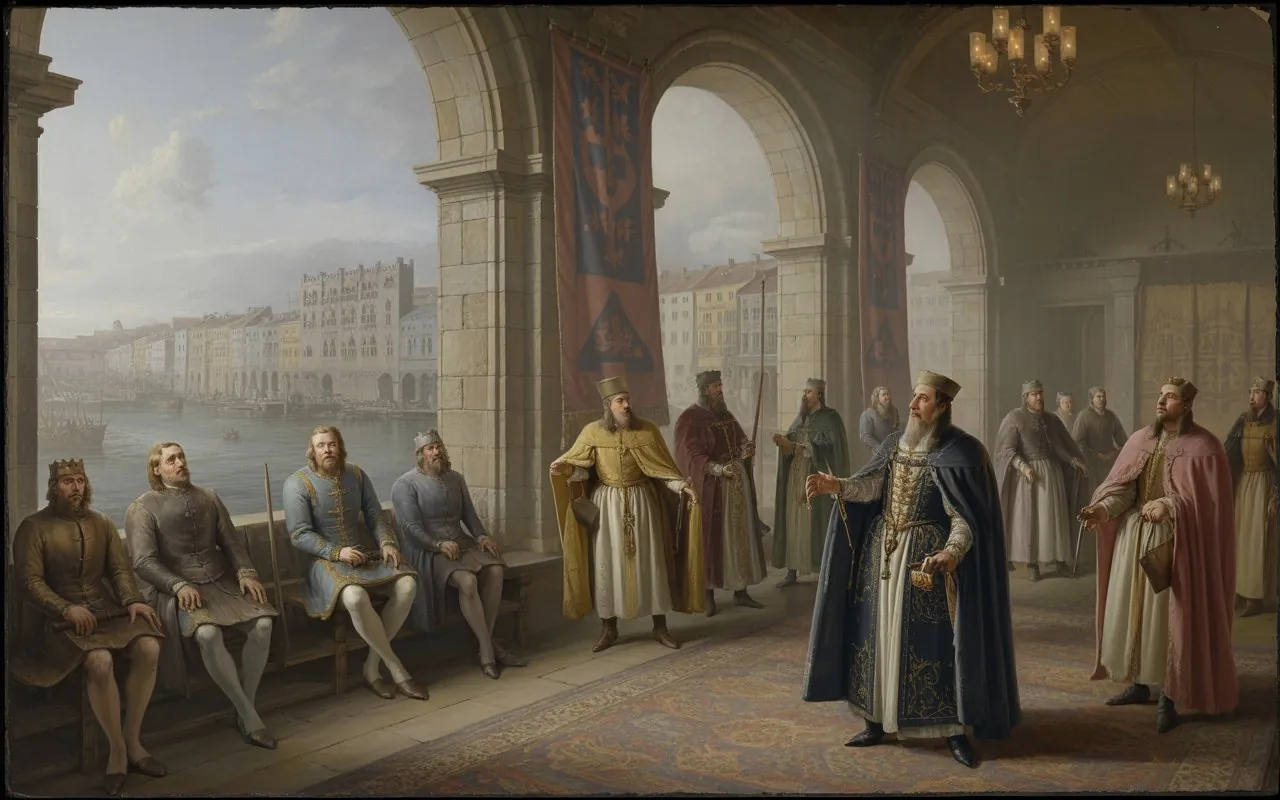
At the top of Genoa’s social hierarchy were the noble and patrician families. These families weren’t always distinguished by ancient lineage; many earned their status through commerce and war. Over time, however, they consolidated power through intermarriage, land acquisition, and dominance of political offices.
Old Nobility and Feudal Roots
These were families who traced their lineage back to the time when Genoa still dealt with feudal lords and coastal barons. Although by the 12th century Genoa was asserting more republican governance, old noble families still held vast estates outside the city and often acted as military commanders. Their honor and status derived from generations of land ownership and their close ties to the Church.
Examples: The Spinola, Fieschi, and Grimaldi (yes, the same family that still rules Monaco today).
Merchant Nobility and Commercial Aristocrats
By the 13th century, a new class of nobles emerged—not through bloodlines but through commercial enterprise. These were powerful shipowners, bankers, and overseas traders who funded crusades, established colonies, and bought influence. They became patricians by virtue of their contributions to the state and eventually joined the old nobility in a shared ruling class.
These wealthy merchants are what historians often call nobiltà di toga (nobility of the robe), as opposed to nobiltà di spada (nobility of the sword). They dressed in silk, funded churches, commissioned works of art, and placed their sons into ecclesiastical or civic leadership.
Over centuries, these two groups merged, forming a tightly knit patriciate that controlled nearly every avenue of Genoese life—from politics to trade, banking to warfare.
Rise of the Popolo: Genoese Commoners and Civic Activists
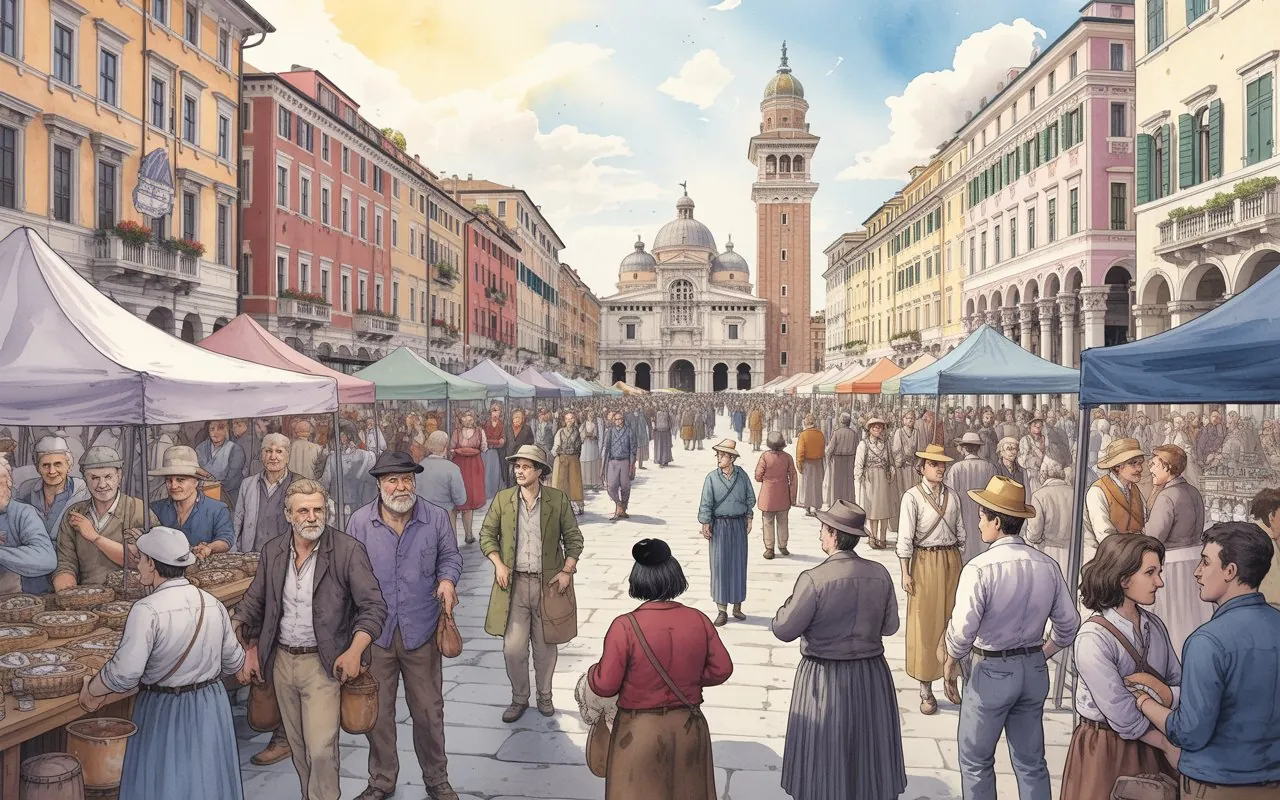
Beneath the nobility were the popolo, a term meaning “the people,” yet in Genoa it had a specific social and political context.
Who Were the Popolo?
The Popolo included:
- Independent merchants
- Small-scale artisans
- Skilled laborers and tradesmen
- Notaries, clerks, and low-ranking officials
- Guild members and association leaders
What’s important to note is that Genoa’s popolo were not peasants. Genoa was a city of largely urban residents, and its economy depended on shipbuilding, cargo handling, textile production, and trade professions. Many in the popolo were better-off artisans who owned property, employed apprentices, and participated in the civic life of the city.
Political Rights of the Popolo
In the late 13th and early 14th centuries, Genoa saw a number of popolare movements—attempts by the commoners to gain political representation and hold back aristocratic domination. This led to the creation of the office of the Capitano del Popolo (Captain of the People), who was intended to speak for the people in a ruling system dominated by clan elders and noble houses.
Unfortunately, these reforms were often short-lived. While some popolo entered wealth and influence, the system largely remained dominated by the patriciate and the more powerful “alberghi” or family clans.
Understanding the Albergo System: Genoa’s Unique Clan-Based Social Fabric
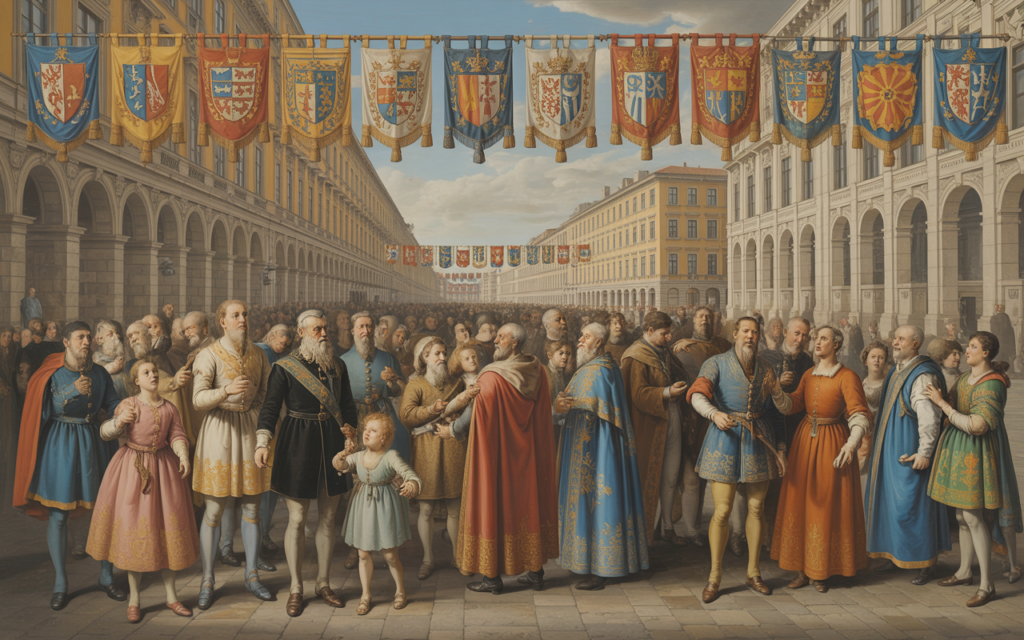
One of the most distinctive features of Genoa’s social system was the Albergo system, an intricate web of clan alliances that functioned both as social clubs and political factions.
What Was an Albergo?
An albergo (literally “hostel” or lodging house) was more than a surname or extended family. It was a coalition of families, often unrelated by blood, who formed alliances for mutual protection, political gains, and business interests. Together, they operated like syndicates or consortiums.
Each albergo had:
- A shared family crest and banner
- Legal recognition under Genoese law
- Voting influence in public policy
- Corporate property, often including a shared palace or estate
- Patronage networks that helped young members find work or spouses
A larger albergo could have dozens of households and form the backbone of a city district. The balance of power between different alberghi shaped Genoa’s political history, often leading to bitter rivalries and factional wars.
Social Role of the Albergo
To answer “how was the social system structured in Genoa,” you must understand that the albergo was where family, politics, and economics intersected. Your identity, career opportunities, and even safety could depend on your affiliation.
In times of conflict, these groups took up arms. In times of peace, they managed municipal governance and served on trade councils. Marriages were arranged not randomly but to consolidate power among alberghi, binding the power structure together across generations.
Social Mobility, Conflict, and the Genoese Middle Class
While Genoa’s system was hierarchical, it wasn’t entirely closed. There were pathways to social mobility, especially in times of economic expansion.
Climbing the Ranks
- Wealth through trade or banking could enable a family to first join a smaller albergo, then rise into elite circles.
- Military service (especially overseas conquests or crusades) could win a commoner titles or lucrative positions.
- Public financing of expeditions or infrastructures (like ports or fortifications) made it possible to gain civic prestige and possibly nobility.
However, these opportunities often required sponsorship—usually by an albergo or patron from the upper class.
Internal Conflicts and Social Unrest
Despite the room for advancement, Genoa was not free from class tension. Conflicts between noble families, along with resentment from the lower classes, sometimes boiled over:
- Riots and revolts occurred during food shortages or tax reform.
- Guelf and Ghibelline rivalries (between those loyal to the Pope versus the Emperor) further divided society.
- Noble exiles and expropriations were common tactics when a rival clan came to power.
Such unrest periodically forced reforms—but also led to oscillation between aristocratic rule and republican experiments.
Genoa’s Civic Institutions: Where Social and Political Lines Blurred
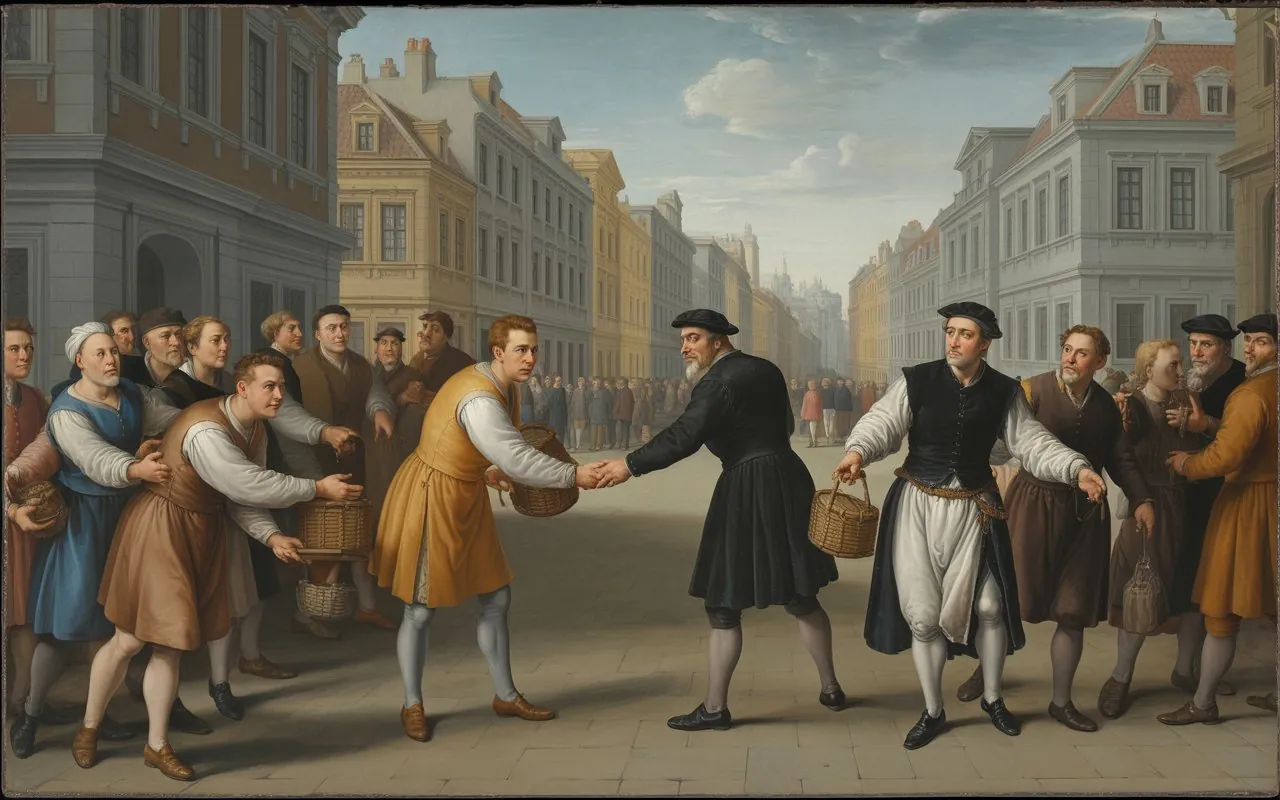
One unique aspect of Genoese governance was the Casa di San Giorgio, a banking institution founded in the 15th century that managed the Republic’s public debt and even governed colonies.
Why Does This Matter?
It shows that Genoa’s social organization blurred the lines between private wealth and public office. Powerful families often bought state influence through debt ownership, which gave them control over territories such as Corsica, parts of the Crimea, and North African ports.
This merger of finance, politics, and class dominance is a clear feature of how the Genoese organized their social world—it wasn’t just bloodlines that mattered, but your financial stake in the commonwealth.
Actionable Insights: Lessons From Genoa’s Social Structure
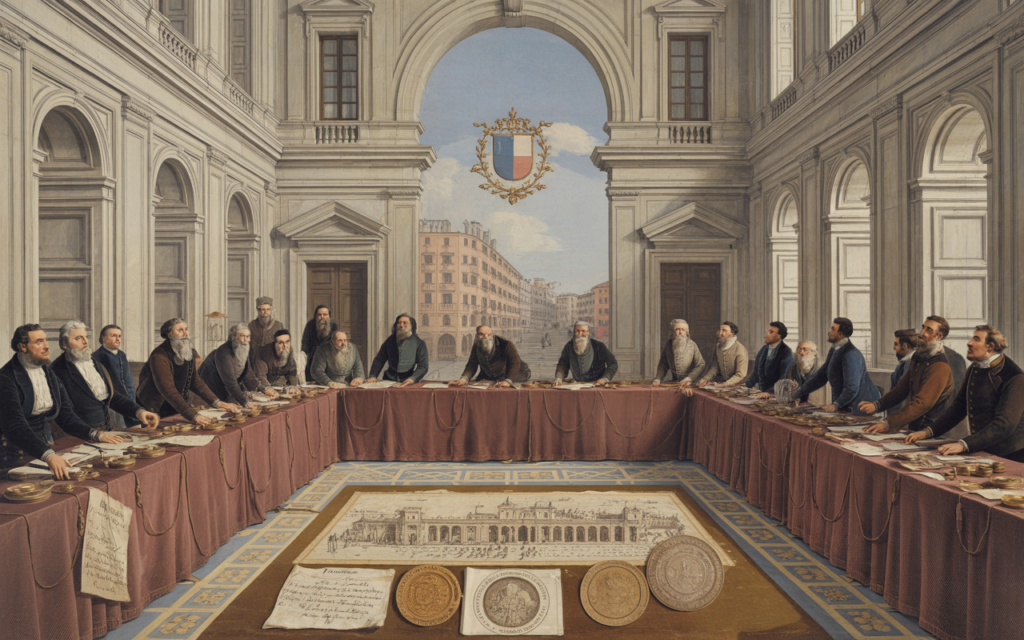
So, how can knowledge of Genoa’s complex social system help us today?
For Business and Community Leaders:
- Strategic alliances matter. Like the Alberghi, build long-term partnerships that promote shared goals and mutual support.
- Be open to new entrants. Genoa thrived when its class system allowed newcomers to rise into powerful positions.
- Leverage capital wisely. Genoese elites used credit and finance to gain not only wealth, but public influence. Consider how your investments reflect your values and legacy.
For Students and Creatives:
- Map your networks. Who are your personal and professional “clans”? How can they benefit from shared purpose?
- Honor history. Genoa’s rise was built on calculated risks, moral ambiguity, and bold diplomacy. Use the past to make smarter decisions today.
Frequently asked questions (FAQs)
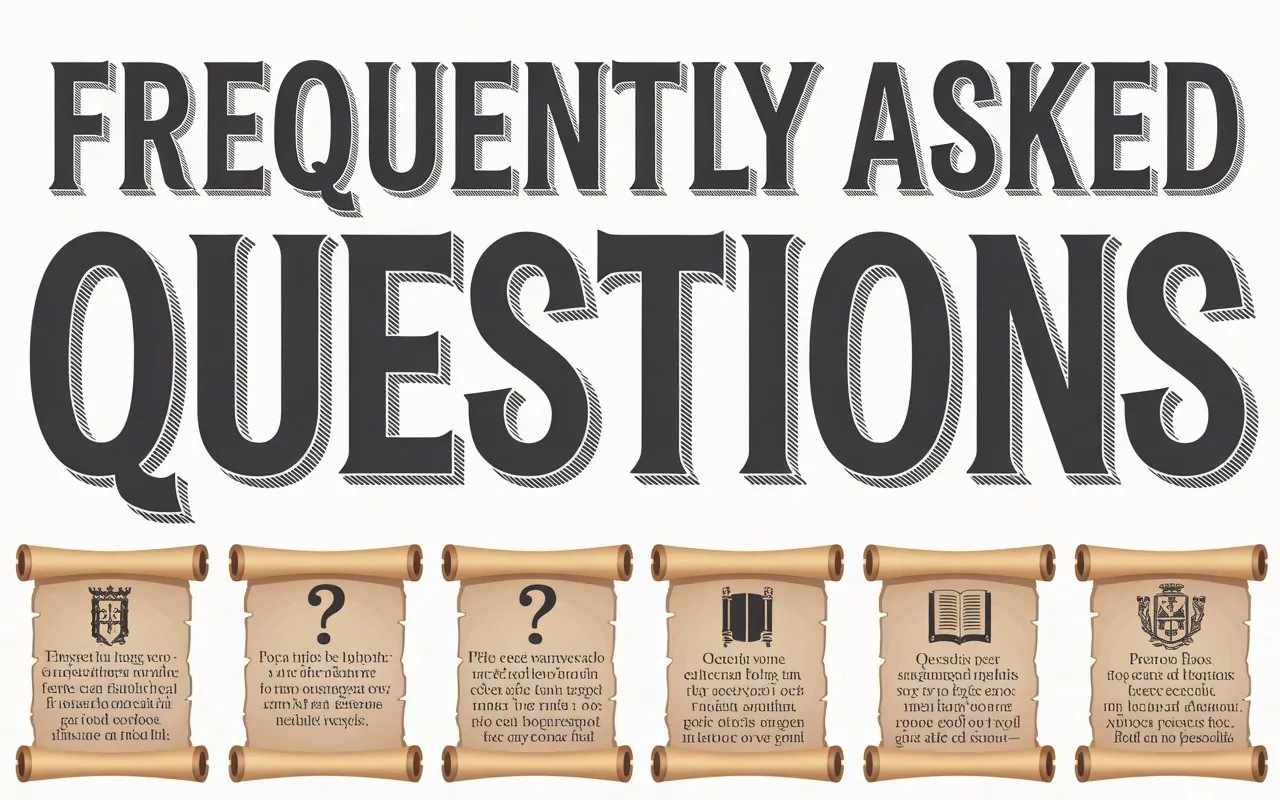
1. How was the social hierarchy in Genoa structured?
Genoa’s society was primarily divided between a ruling elite—consisting of petty noblemen and wealthy bourgeois families—and the broader population, including merchants, artisans, and laborers. The upper class held both political and economic power, while maritime commerce provided opportunities for social mobility among the lower ranks.
2. What role did clans and family groups play in Genoese society?
Clans, or extended family groups, were foundational to Genoa’s social, economic, and political life. These kinship networks coordinated resources, mobilized support for political leadership, and at times acted independently to seek privileges abroad. Clan rivalries often influenced city governance and commercial priorities, contributing to both cooperation and internal conflict.
3. How did Genoa’s merchant elite influence government and politics?
The merchant aristocracy, as leading creditors to the city and principal actors in trade, exercised significant influence over governance. Institutions like the Casa di San Giorgio allowed wealthy creditors direct involvement in fiscal policy and advisory roles, cementing their sway over political decisions and administration.
4. Was there potential for social mobility in Genoese society?
Yes, Genoa allowed some degree of social mobility, particularly for successful merchants and entrepreneurs. Economic achievements in trade or public finance could enable families to rise in status, especially if they formed strategic alliances with major clans or served in public offices.
5. How did political institutions reflect and reinforce social divisions?
Genoa’s governance was shaped by consultative institutions and frequent participation by elite families. Offices such as the doge, council seats, and the role of Protectors of the Casa di San Giorgio typically rotated among aristocratic clans, maintaining the established social hierarchy. Disputes among creditors and clans often disrupted effective governance.
6. What impact did popular uprisings and social conflicts have on the system?
Periodic social conflict—including popular uprisings during times of economic crisis—sometimes led to reforms in public debt management and broader civic participation. However, even after such upheavals, power generally remained concentrated among established elite families.
7. In what ways did Genoese laws address the city’s diverse society?
Genoa maintained distinct legal systems (capitula and regulae) to manage relations among different population sectors, reflecting the city’s layered and sometimes competing social groups. Legal differences sometimes mirrored the divide between elite and popular classes, affecting civic rights and obligations.
8. Why did the clan system persist so long in Genoa?
The clan system endured because it provided security, economic opportunity, and social cohesion in the absence of a strong central authority. Cooperation among clans was essential for large-scale economic ventures and defense, though persistent rivalries also contributed to instability and periodic breakdowns in governance.
Conclusion
If you’ve been asking, how was the social system structured in Genoa, now you know—it was a multi-layered, finely tuned, but frequently tested hierarchy that blended nobility, business, and social alliances in a unique way.By studying Genoa, we uncover more than just medieval history—we find lessons in leadership, social engineering, and political compromise. From the elite alberghi to the popolo’s fight for representation, Genoa offers a nuanced blueprint for understanding how societies can function, thrive, and sometimes implode depending on who holds the reins of power.Understanding Genoa’s social structure is not just about the past—it’s a mirror for today’s world of power networks, community building, and institutional dynamics.